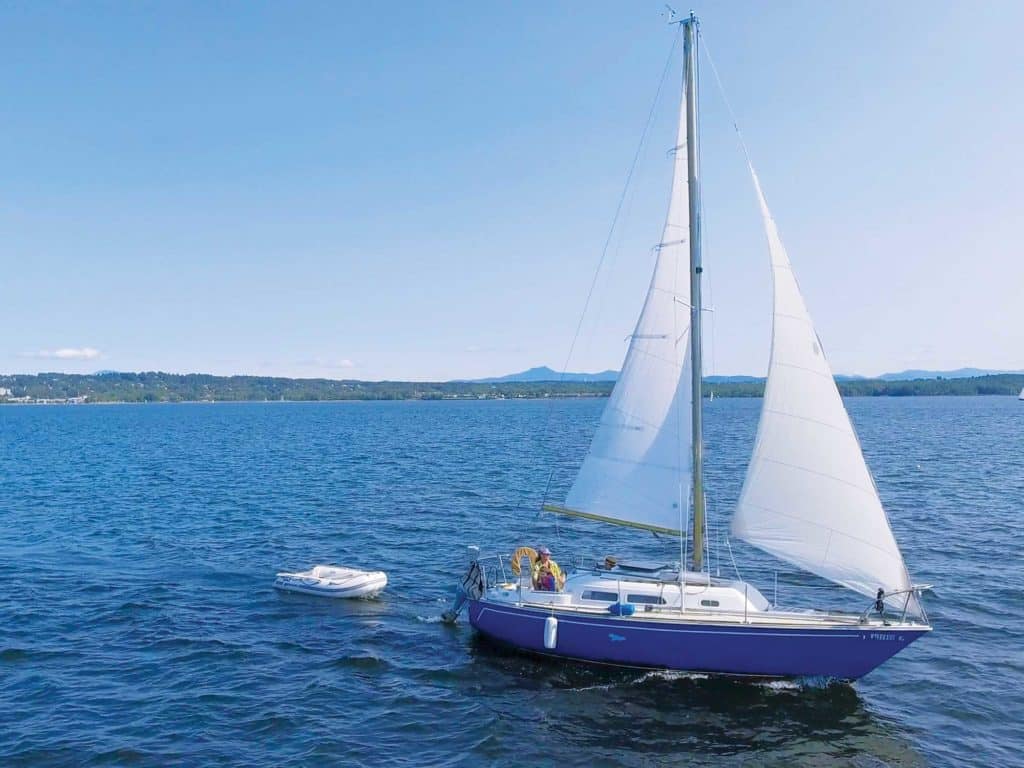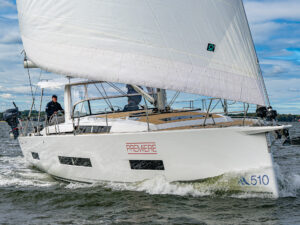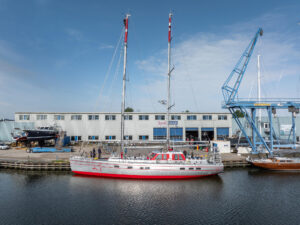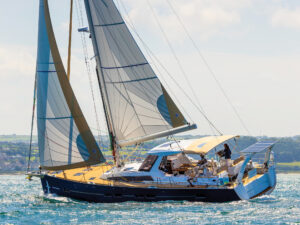
There was a day, before wide screens, all-night buffets and king-size beds, when a family would cruise happily on a boat like the O’Day 27. Solid and simple, the little sloop was just right for lake, harbor or coastal exploring. Small enough for a quick daysail with friends, big enough for a weekend or week gunkholing, the 27 was hugely popular: Between 1972 and 1979, 720 boats were produced at O’Day’s factory in Fall River, Massachusetts.
George O’Day, who founded the company in 1951, wasn’t a cruiser (he won a gold medal at the 1960 Olympics in the 5.5 meter class), but he understood that an uncomplicated sailboat was something a whole family could enjoy.
Alan Gurney designed it. Famous in the high-end yachting world for Windward Passage and other one-off race boats for millionaires, Gurney is said to have worked with what sailing writer Ted Jones called “a seaman’s eye; he thought like the water through which he had sailed.” Commissioned to create an everyman’s sailboat, Gurney sketched a compact, almost blocky hull with a 22-foot-9-inch waterline and 4-foot draft. Half of its 5,000-pound displacement was in the lead keel, which balanced a mast 38 feet above the water, 320-square feet of sail, and the heft to carry a chute or big genoa. The hull was solid, hand-laid fiberglass, with teak brightwork to dress it up. It came equipped with outboard motors or, later, an inboard gas or diesel engine.
Step aboard, as I did on Jonathan Heller’s 1974 O’Day 27, moored on Lake Champlain in Burlington, Vermont, and you will first find a long cockpit with a tiller, an ample entryway and an interior that is surprisingly spacious, due in part to its 9-foot beam, with a fold-up table, stepped mast and 6-plus-foot headroom. According to Jones, writing in Professional Boatbuilder, an O’Day salesman complained about headroom in Gurney’s initial design. Gurney handed him a pencil and “asked him to draw where he thought the headroom should be.” If the cabin “appears to be a bit high,” Jones wrote, “that’s the reason!”
O’Day’s sales brochures for its first keel boat were hyperbolic: a “luxurious cruiser,” “big, airy sleeping accommodations for five,” “a truly superior yacht.” But at a sail-away price of under $7,000, the first O’Day 27s were an instant hit. By the end of their run, they cost $14,500.
By today’s standards, the boat’s galley and head remind me of a small camping trailer—adequate but tight. There’s an icebox, an alcohol stove and an optional shower (if you watch your elbows). One striking compromise is the absence of any anchor hardware. A bow pulpit was standard but nothing on which to hang a hook. Over the years, owners have also had to deal with water intrusion on chainplates.
The good news is that these boats can be had for a song, from $3,900 to $8,000, and that many parts are still available. Heller, a handyman, musician and father of a 3-year-old girl, purchased the boat for $7,000 from a college student who had been living on the hook. Still learning how to sail his yet-unnamed love, he plans to explore Champlain, a cruising ground “big enough to be challenging but not big enough to be scary.” The same could be said of the O’Day 27.
Journalist and author Jim Carrier is a CW contributing editor.








